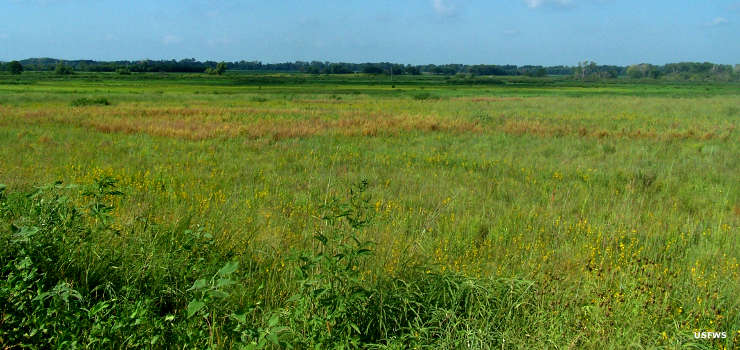Flint Hills National Wildlife Refuge

Birds in the air above Flint Hills National Wildlife Refuge

Flint Hills National Wildlife Refuge is an 18,463-acre property upstream of the John Redmond Reservoir flood control project near Hartford, Kansas. The refuge is an overlay on a floodplain and wetlands that sees water levels rise and fall with the seasons. Habitats include bottomland hardwood forest, grassland, riparian areas, wetlands and agricultural fields. This is an area that was tallgrass prairie for thousands of years before farmers arrived and changed everything. Now, to improve the habitats for wildlife, many of those human improvements are being reversed.
More than 294 species of birds have been identified on Flint Hills National Wildlife Refuge, including 103 species that actively nest on the property. Among the mammals on the refuge are white-tailed deer, coyotes, bobcats, beavers and the elusive river otter. The refuge is also home to snakes, reptiles, turtles and multiple amphibians.
In some areas, refuge staff use levees, pumps and water control structures to mimic the historical wet and dry cycles of the area. Refuge staff also plant native seeds and regularly burn the tallgrass prairie areas to mimic historic cycles: the health of tallgrass prairies is highly dependent on regular burning. Woodland areas are generally along the Neosho river and its tributaries and these are actively managed to rid the area of invasive non-native plant species and encourage the growth of fire-tolerant native species. The refuge staff also work with local agricultural entities to reduce the amount of agricultural runoff that reaches the river and affects the wildlife and plants fed by the river.
The Flint Hills National Wildlife Refuge visitor center is open from 8 am to 4:30 pm Mondays through Fridays except for Federal holidays. The refuge itself is open from sunrise to sunset. The property is day-use only and camping, campfires, off-road vehicle use, fireworks, target shooting and dog training are prohibited. The refuge does offer an auto tour loop (subject to seasonal closures) and several established hiking trails. Part of the Burgess Trail is an elevated, handicap-accessible boardwalk that leads into the marsh. Near Dove Roost Pond is an observation tower and another hiking trail. Areas north of the river are subject to closure from November 1 to February 28. There are also two boat ramps on the refuge.

Tallgrass prairie at Flint Hills National Wildlife Refuge

Flint Hills National Wildlife Refuge